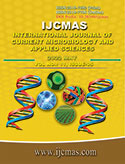


 National Academy of Agricultural Sciences (NAAS)
National Academy of Agricultural Sciences (NAAS)

|
PRINT ISSN : 2319-7692
Online ISSN : 2319-7706 Issues : 12 per year Publisher : Excellent Publishers Email : editorijcmas@gmail.com / submit@ijcmas.com Editor-in-chief: Dr.M.Prakash Index Copernicus ICV 2018: 95.39 NAAS RATING 2020: 5.38 |
Wide crossing or distant hybridization is an effective means of transferring desirable genes into cultivated species. It is more successful in closely related species, but as we move towards tertiary gene pool, it turns out to be very hard to move the quality of interest. The fundamental restricting variable is the cross-capacity hindrances between irrelevant species which generally makes trouble to create interspecific gene transfer. The main limiting factor is the cross-ability barriers between unrelated species which usually creates difficulty to produce interspecific hybrids. To re-establish the attribute of natural manageability and to battle the biotic and abiotic stress in developed vegetable yields, wide hybridization has been upheld a solid device in the hand of plant raisers as wild species are the rich pool of respectable characters, better quality and handling characteristics just as giving obstruction against biotic and abiotic stress. Wide hybridization comprises the efficient conventional breeding and modern molecular techniques as its compelling instrument in crop improvement.
 |
 |
 |
 |
 |